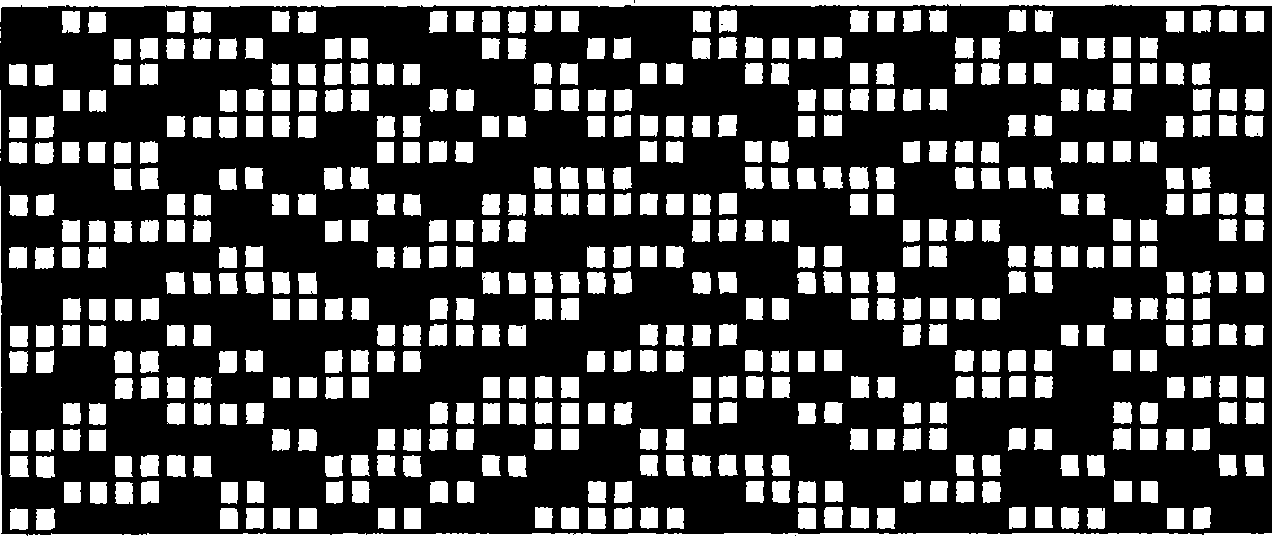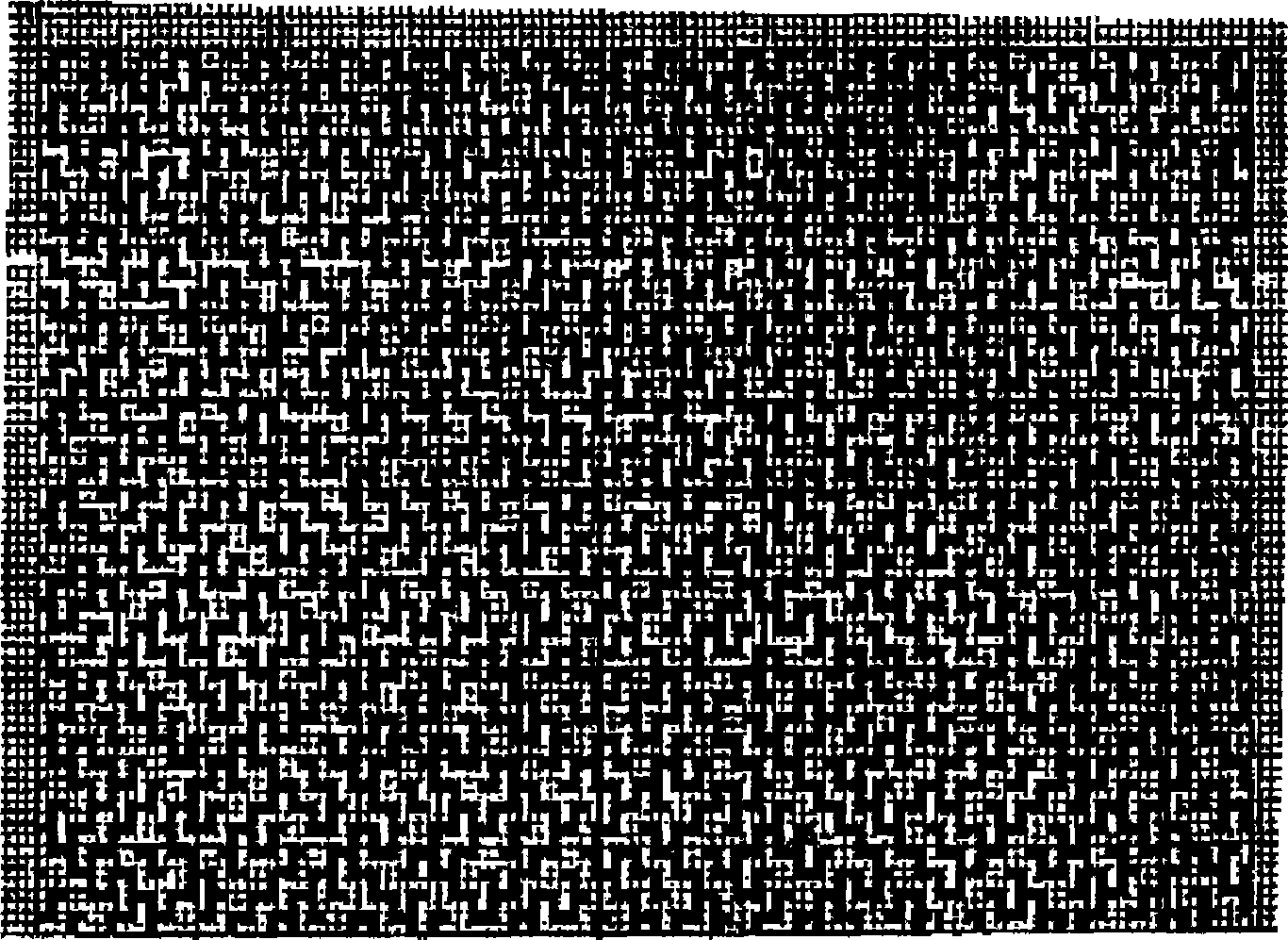Preparation of ultra water-repellent and oil-repellent fabric
A super water-repellent and fabric technology, applied in textiles and papermaking, fiber treatment, fiber type, etc., can solve problems such as difficult to give fabric functions
- Summary
- Abstract
- Description
- Claims
- Application Information
AI Technical Summary
Problems solved by technology
Method used
Image
Examples
Embodiment 1
[0050] Select polyester / nylon composite superfine fiber and polyester high-shrinkage yarn with a linear density of 180dtex / 72f, use crepe structure, use existing textile technology to make fabrics, and open the fabrics; take organic fluorine and water respectively, Mix and prepare an organic fluorine finishing agent with a pH value of 5 to 6, and control the concentration of organic fluorine in the finishing agent to 10g / L; put the fabric after fiber opening treatment into the organic fluorine finishing agent at a bath ratio of 1:20 In the agent, the treatment is carried out by two dipping and two rolling methods, and then the treated fabric is placed under a pressure of 1.96×10 5 Pa, temperature is 80 ℃ environment pre-baking 5min, after that, this fabric is baked 5min in the environment 120 ℃ again, obtains the fabric after pretreatment; According to mass ratio 1:1:0.5, take market Nano TiO 2 powder, sodium laurate and ammonium polyacrylate, mix sodium laurate and ammonium ...
Embodiment 2
[0055] Select polyester / nylon composite superfine fiber and polyester high-shrinkage yarn with a linear density of 170dtex / 50f, use crepe structure, use existing textile technology to make fabrics, and open the fabrics; take organic fluorine and water respectively, Mix and prepare an organic fluorine finishing agent with a pH value of 5-6, and control the concentration of organic fluorine in the finishing agent to 15g / L; put the fabric after fiber opening treatment into the organic fluorine finishing agent at a bath ratio of 1:22 In the agent, it is treated by two dipping and two rolling methods, and then the treated fabric is placed under a pressure of 2.0×10 5 Pa, the temperature is 90 ℃ in the environment of pre-baking for 1min, after that, put the fabric into the environment of 220 ℃ and bake for 1min to obtain the pretreated fabric; according to the mass ratio of 1:1.2:0.8, take commercially available nano-TiO 2 powder, sodium laurate and ammonium polyacrylate, mix sodiu...
Embodiment 3
[0057] Select the polyester sea-island microfiber and polyester high-shrinkage yarn with a linear density of 200dtex / 20f, use the crepe structure, use the existing textile technology to make the fabric, and open the fabric; take organic fluorine and water respectively, mix Prepare an organic fluorine finishing agent with a pH value of 5-6, and control the concentration of organic fluorine in the finishing agent to 20g / L; add the prepared organic fluorine to the fabric after fiber opening treatment at a bath ratio of 1:25 In the finishing agent, two dipping and two rolling methods are used for treatment, and then the treated fabric is placed under a pressure of 2.2×10 5 Pa, pre-baking in an environment with a temperature of 85°C for 3 minutes, and then putting the fabric into an environment with a temperature of 170°C for 3 minutes to obtain a pretreated fabric; according to a mass ratio of 1:1.3:1, take commercially available nano-TiO 2 powder, sodium laurate and ammonium pol...
PUM
| Property | Measurement | Unit |
|---|---|---|
| Diameter | aaaaa | aaaaa |
| Concentration | aaaaa | aaaaa |
| Water pressure | aaaaa | aaaaa |
Abstract
Description
Claims
Application Information
 Login to View More
Login to View More - R&D
- Intellectual Property
- Life Sciences
- Materials
- Tech Scout
- Unparalleled Data Quality
- Higher Quality Content
- 60% Fewer Hallucinations
Browse by: Latest US Patents, China's latest patents, Technical Efficacy Thesaurus, Application Domain, Technology Topic, Popular Technical Reports.
© 2025 PatSnap. All rights reserved.Legal|Privacy policy|Modern Slavery Act Transparency Statement|Sitemap|About US| Contact US: help@patsnap.com



